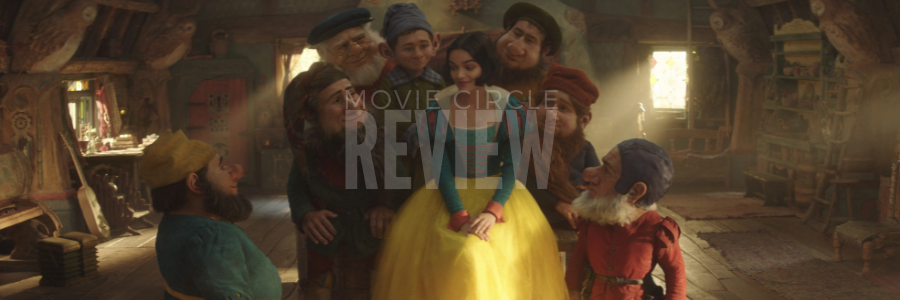For millennia audiences have been enthralled by the most cherished fairy tale of all time, Snow White. From its first known iterations to its legendary Disney adaptation, Snow White’s path from innocence to danger and finally to atonement speaks to readers and viewers of many generations. Still, Snow White is a timeless story because of what? Is the story only the charming princess, the cruel queen, and the dashing prince, or does it carry deeper symbolism that still enthralls us? Let’s investigate the beginnings, ideas, and long influence of Snow White in both its literary and film versions.Fairy tales and beauty
Source of Snow White
The story of Snow White originated in German folklore tradition; the Brothers Grimm first published their 1812 collection, Grimm’s Fairy Tales, which included the first documented version. Seeking to honor traditional oral storytelling, the brothers, Jacob and Wilhelm Grimm, collected tales from all throughout Germany and compiled them into their well-known anthology. Although Snow White was not as well-known in its early iteration, it finally rose to become among the most well-known fairy stories from the collection.Fairy tales and beauty
Snow White by The Brothers Grimm is significantly different from the polished form most of us are familiar with nowadays. The core points of the narrative remain the same: Snow White, a lovely young princess, is the envy of her evil stepmother, the Queen. Snow White flees into the forest and hides among seven dwarfs when the Queen orders her execution. The Princess can only be awakened by a prince’s kiss; the Queen’s jealously finally drives her to poison Snow White.Fairy tales and beauty
Still, the Grimm version is darker and more brutal than the cleaned-up readings that followed. In the original story, the Queen is punished for her wicked activities by having to wear iron shoes heated till they burn her to death. Though unsettling, these components draw attention to the moral truths buried in the narrative: good will finally overcome evil, and vice versa.Fairy tales and beauty
The Disney Adaptation: Film Silver Screen Snow White
Disney unveiled a revolutionary animated picture that permanently altered the movie scene in 1937: Snow White and the Seven Dwarfs. Still a masterpiece today, it was the first-ever full-length animated picture. Walt Disney’s adaption veered from the original story, softening some of the more sinister parts and stressing the fairy tale’s more magical features. The Disney adaptation eliminated the graphic Queen punishment, therefore emphasizing more symbolic than physical aspects of her death.Fairy tales and beauty

The Disney version further enhanced Snow White’s innocence and compassion. Disney’s Snow White is presented as an active agent of good, full of love for all creatures, joy, and compassion unlike the more passive Snow White of the Grimms’ story. Emphasizing purity and innocence, this rendition offered a basis for the idealized princess figure in contemporary society.Fairy tales and beauty
Disney’s Snow White also introduced famous alterations that became trademark of fairy tale retellings. Unlike in the Grimms’ tale, where the dwarfs merely hide, Snow White’s relationship with the seven dwarfs is more cooperative and supportive. The well-known song “Someday My Prince Will Come” accentuates the optimism and romance theme underlined in the animated picture even more.
Snow White’s themes are beauty, jealously, and innocence.
The concept of beauty and its relationship to both virtue and peril is among Snow White’s most potent subjects. The Queen’s fixation with being the “fairest of them all” finally pushes Snow White to evil; her beauty causes stepmother’s jealousy. An often repeating element in the narrative, the mirror represents vanity and self-obsession. The Queen’s identity is based on her outward look; she feels threatened and tries to kill her stepdaughter when Snow White’s beauty outstrips hers.Fairy tales and beauty
Still, Snow White’s beauty speaks more than just surface appeal. It also relates to her virtue, simplicity, and friendliness. These are the traits that finally shield her; they contrast with the inner ugly of the Queen, which shows up in her hostile behavior. This difference between internal and external beauty emphasizes a moral lesson: morality, love, and goodness transcend appearances.Fairy tales and beauty
The Queen’s jealously also warns of the perils of obsession and the extent people would go to preserve authority and status. The Queen follows a sinister road where she turns to murder and trickery to keep power since she cannot believe Snow White might be more beautiful than her. Her jealousy is finally her undoing since she loses everything, including her life.Fairy tales and beauty
Another fundamental issue with Snow White is innocence. Snow White herself is shown as a naive, almost perfectable character who treats people kindly. Emulating an idealized version of purity, she befriendes the dwarfs and shows sympathy for the forest’s animals. Her innocence is not only a quality but also a strong tool shielding her from the evil all around. Snow White’s purity is, in many respects, what makes her the ideal protagonist for the fairy tale genre, in which the forces of good and evil are frequently presented in sharp contrast.Fairy tales and beauty
Modern Snow White: A Legacy of Interpretation
Though Disney’s Snow White still is the most well-known, the narrative has been reinterpreted and repeated innumerable times in many different media, from novels and films to television shows and theater. Every fresh iteration captures the cultural setting of its day, therefore enabling the narrative to remain relevant to viewers of today.
The story of Snow White has lately been reimagined in darker and more complicated ways. Snow White is seen in movies like Snow White and the Huntsman (2012) and Mirror Mirror (2012) as a more empowered character, sometimes with agency and strength absent in past iterations. These adaptations present Snow White as a woman who battles for her survival rather than waiting to be saved by a prince, therefore exploring her leadership and symbolic opposition against oppression.Fairy tales and beauty
Particularly Snow White and the Huntsman stresses issues of authority, revolt, and self-determination. Rather from the docile princess of Disney’s Snow White, Kristen Stewart’s character is a fighter who challenges the evil queen, Charlize Theron plays. This darker interpretation of the classic narrative challenges conventional gender roles and the belief that women should constantly rely on others to save them, therefore appealing to modern ideas of female empowerment.Fairy tales and beauty
In terms of literature, Snow White has also been reinterpreted via the prism of feminist criticisms. Many modern iterations of the story look at how the female characters—especially the Queen and Snow White herself—might be seen as models of several facets of womanhood. While Snow White comes to represent purity, also one of fragility, the Queen captures the destructive aspect of vanity. These contemporary interpretations challenge the society expectations placed on women and try to investigate the roles they are sometimes compelled into.Fairy tales and beauty
Snow White’s Continual Popularity: Why It Works
Thus, why does Snow White still enthralls viewers even after hundreds of years? Its ongoing appeal stems from various sources.
First it addresses universal issues of good vs evil, envy, and the search for justice that cut across eras and civilizations. These subjects address the essence of human nature: our goals, fears, and wants. Snow White asks us to examine our own shortcomings, how we handle them, and how we respond when threatened or wronged—what makes us good or bad?
Second, Snow White herself epitomizes purity and innocence, therefore reflecting the idealized qualities many people yearn for. She is always a source of hope because of her decency, compassion, and atone behavior. Snow White is still a symbol of tenacity even under danger; her success at the end provides the narrative justice and closure.
At last, the narrative is adaptable enough to let one reinterpret it and reinventions, so ensuring its relevance. Snow White keeps changing, mirroring the shifting ideals and cultural dialogues of every era from its dark origins to its glitzy Hollywood finishes.Fairy tales and beauty
Final Thought: A Timeless Fairy Tale
Snow White depicts the complexity of beauty, power, jealousy, and innocence rather than only a fairy tale about a princess and her evil stepmother. This story asks readers and viewers to consider the values they value as well as the perils of vanity and obsession. Snow White still inspires us whether in its original form or via its several contemporary renditions since it provides ageless insights on the human condition.
